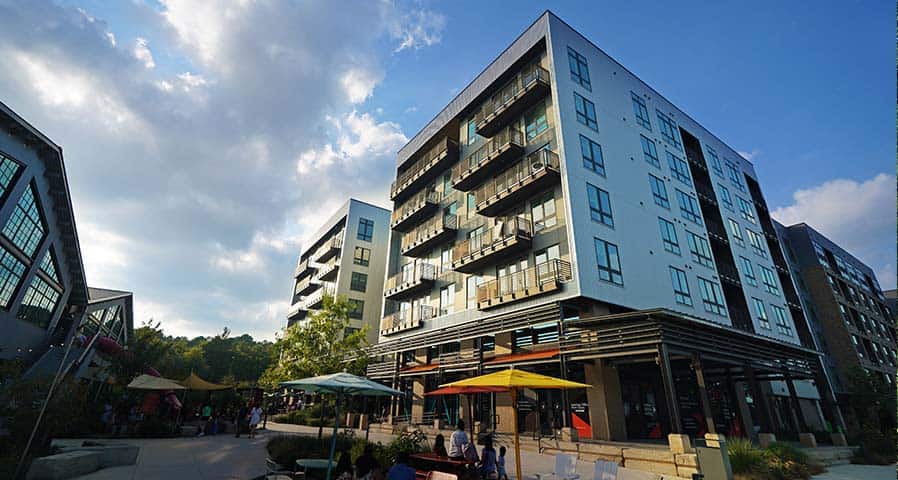The consumption of energy in commercial buildings is a significant worry to landlords and managers due to its effects on operational costs and environmental sustainability. For facilities looking to save on expenses in line with emerging regulations, it is important that they understand how and where electric power is used within these premises. In this blog post, we will look at the current state of electric consumption in US commercial buildings, its main components and explore ways through which we can enhance efficiency.
Overview of Energy Consumption
An overview from 2021 reveals that commercial buildings took in 9.1 quadrillion BTU energy according to the US Energy Information Administration (EIA). This accounts for 12% of total US energy consumption but for most companies it is a huge amount that can be considered a constant cost. Interestingly, buildings under construction incurred energy bills totaling $142 billion representing $23,900 for each building or $1.47 per square foot area appropriated.
Breakdown of Commercial Energy Use
Two main sources supply energy consumed by different types of offices: natural gas and electricity. According to EIA data, electricity accounts for 38% of the energy consumed in commercial buildings, while natural gas makes up 61%. This situation stems from the various needs of commercial spaces where electricity is necessary for facilitating lighting, operational equipment among others while heating and hot water systems can depend upon natural gas primarily due to its affordability as compared to other energy sources.
Key Areas of Energy Consumption
The Department of Energy (DOE) gives an enlightening breakdown of how much power goes into commercial buildings. On average, such structures use 22.5 kilowatt-hours (kWh) per square foot per annum. Broken down it looks like this:

These numbers show that refrigeration, equipment and lighting consume the most power within commercial premises. It is also important to note that consumption may vary greatly depending on such factors as location, size or type of industry served by the building.
Energy Consumption by Building Type
EIA has categorized several types of commercial buildings based on their different consumption patterns:

Among them, office buildings take in the highest amount of energy because they use numerous lighting fixtures, heating systems and cooling units. In contrast to these are food service and sale which mostly have big open spaces where refrigeration is always required.
If your organization is considering an energy efficiency rollout, Incentive Rebate360 is here to help. With over 62 years of accumulative experience, we can maximize your commercial rebate recovery accelerating your payback period. Schedule a call with one of our experts to learn how we can enhance the ROI of your energy efficiency projects.
Opportunities for Reducing Energy Consumption
Cutting down energy usage in offices leads to cost savings and helps support sustainable development efforts. There are several energy savings strategies businesses can implement to reach their sustainability goals:
- Implement Energy Efficiency Upgrades: Replacing conventional lighting with LEDs, enhancing insulation or installing efficient HVAC systems can lead to a substantial decrease in power consumption.
- Adopt Renewable Energy Sources: The integration of renewable energy sources such as geothermal heating or solar panels promotes reduced reliance on traditional electricity generation sources hence fan down the outlay on overall power costs.
- Monitor and Optimize Energy Use: Employing energy management systems for tracking and analyzing how energy is used provides insights into where improvements can be made.
- Set Ambitious Sustainability Goals: Many real estate investment trusts and property managers have set net-zero energy ambitions aiming at providing insulation of their buildings from future shocks while at the same time improving their overall sustainability image.
Calculating Energy Efficiency
Energy Usage Intensity (EUI) is a key performance indicator for assessing energy efficiency in commercial buildings. It is the measure of total energy consumed by a building annually divided by its gross floor area. A lower EUI denotes better utilization of energy resources. By comparing EUI values with primary averages at national levels and similar properties, operators can determine how well their buildings perform in terms of energy saving.
The Benefits of Energy Efficiency
Energy efficiency has numerous advantages which include:
- Reduced Energy Costs: This results due to the decrease in energy used which results in low utility bills.
- Operational Savings: Enhanced insulation plus energy-efficient systems decrease heat losses among other inefficiencies related to power consumption.
- Incentives and Rebates: These can significantly help offset initial capital investments.
- Attracting Environment Friendly Tenants: Tenants who are environmentally conscious like energy efficient buildings.
- Extended Equipment Lifespan: Often, energy-efficient appliances have higher maintenance periods.
Incentives Can Help Reduce Commercial Energy Consumption
Power consumption within commercial properties is a major chronic expense as well as an imperative ingredient in any running business. Through understanding how much energy is spent we can have sound energy management strategies. Due to the advancements being made in energy-efficiency and rising number of incentives available, now is the perfect time to invest in sustainable business measures.
Incentive Rebate360 can assist in finding financial incentives to offset the costs of energy efficient projects. To learn more, contact us by calling 480-653-8180, emailing [email protected], or schedule a call that fits your needs by clicking the button below!






0 Comments